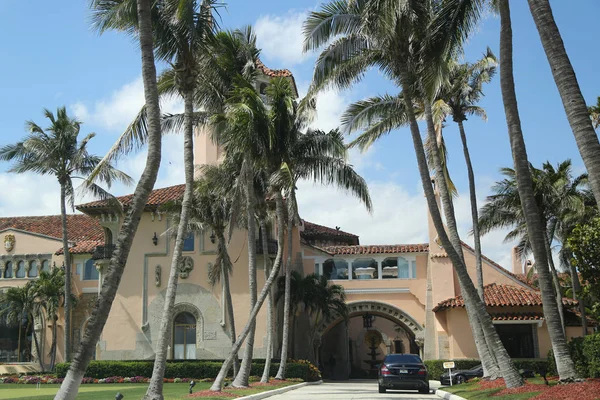Three Visions of the Defense Industrial Base
Where will Trump take America’s arms makers?

Concern about the defense industrial base (or DIB, in the depressed dialect of the Beltway lifer) is one of the few truly bipartisan issues in Washington today. From Bernie Sanders to Elon Musk, nearly everyone seems to agree: America’s defense suppliers are unable to reliably and cost-effectively provide the military with the equipment it needs.
But if there is broad consensus on the symptoms, agreement on the disease’s underlying causes has proven more elusive. Some have zeroed in on private industry, seeing the root of our production malaise in corporate practices ranging from “just-in-time” logistics to stock buybacks and underinvestment in capital projects. Others have focused on government, lambasting what they claim is insufficient defense spending and a broken acquisition system. Then there are the systemic critiques—industry consolidation, globalization and offshoring, the financialization of the U.S. economy, etc.
For its part, the Pentagon has taken steps to make industrial revitalization a priority, changing elements of its organization, resourcing, and strategy. These efforts may have borne some fruit: Production output appears to have increased, for instance, and American suppliers have received billions through channels like the Defense Production Act. But despite this progress, to many observers the problems remain acute, and ominously titled thinkpieces (“The Crumbling Foundation of America’s Military,” “The U.S. Is Losing the Ability to Deter War with China,” and so on) continue to be published apace.
Enter President-elect Donald Trump, whose platform promised to both “strengthen and modernize our military” and “turn the United States into a manufacturing superpower.” Ambitious goals, surely; to accomplish them, his administration will need a coherent understanding of what ails U.S. arms makers, as well as an actionable blueprint for systemic fixes. A vision of the defense industrial base, in other words.
What might such a vision look like? A survey of the current landscape suggests three broad possibilities.
The first vision would advance a market-based remedy for our defense industrial woes. Especially over the past year or two, this has been the view advanced by executives at newer defense firms like Anduril and Palantir, as well as many of their Silicon Valley backers. The basic claim is that DOD’s process for buying weapons is shot through with perverse incentives that stifle competition and subsidize inefficiency, benefitting a handful of large companies—the so-called “legacy primes” like Lockheed Martin or Boeing—who are better at navigating the byzantine acquisition bureaucracy than actually building things. Compounding the problem is the fact that these firms tend to focus primarily or exclusively on defense, making them totally dependent on government spending for their revenues, thereby creating a monopsony environment and insulating them from the competitive pressures of the broader commercial economy. The results? High costs, long timelines, and low innovation.
To fix this, sweeping changes to defense acquisition have been proposed: eliminating “cost-plus contracting,” the practice whereby the government funds contractors’ development and production work, rather than simply paying a set price for a finished item; redefining the Pentagon’s requirements process to emphasize problems to be solved (e.g., this plane must be able to perform this kind of mission) instead of performance specifications (e.g., this plane must be able to fly this fast); and replacing complex, bespoke systems with cheaper, more modular technology (think, as Elon Musk suggested a few weeks back, fewer F-35s, more drone swarms). By breaking down the defense monopsony, adherents of this approach also seek to bring in more commercially oriented firms, creating a larger, more diverse, and ultimately more successful supplier base.
For a glimpse of what this might look like in practice, consider Anduril’s planned Barracuda-M project, a family of munitions intended to provide “a more affordable, producible, available, and adaptable cruise missile capability than existing options.” If the company makes good on its claims—a huge “if,” of course—these weapons will cost half as much and use half as many parts as our current missiles.
Of course, adopting this vision would carry considerable risks. DOD has been buying the same kinds of systems from the same kinds of suppliers, under the same basic rules, for decades. And although this has created obvious problems (indeed, it’s why this conversation is happening in the first place), it has also been relatively stable and predictable. Embarking on a sweeping defense reformation would likely change that; it remains unclear whether newer firms, who lack the decades of experience and specialization the legacy primes bring to the table, can really deliver on their sometimes spectacular promises.
The second vision locates the problem, not in too much interference with the industrial base, but too little. In this view, defense firms have shown themselves to be diligent capitalists, routinely overcharging the government and getting away with it because their customer has no alternative for things like fighter jets and nuclear submarines. And when Washington increases defense spending, CEOs use the extra money for stock buybacks or juiced-up dividends—not new production facilities or more workers.
The solution, for advocates of this approach, is clear: expand state control over the defense industry. Defense firms are not normal businesses; the unique nature of their products means they are ultimately and irreducibly creatures of the taxpayer. Moreover, their success is critical to the nation’s interests in an unusually direct way, so why shouldn’t their operations be the legitimate subject of government policy? Partisans of this vision might even argue, with John Kenneth Galbraith, that “the big defense firms are really public firms.” Perhaps unsurprisingly, critiques of this sort have mainly been offered by progressive politicians like Bernie Sanders and Ro Khanna, although they also have clear resonances with the market-skeptical, industrial policy–friendly thinking of some on the right.
To the question of what policy interventions to pursue, there is a spectrum of possible answers. On the moderate end of this spectrum, DOD could introduce new requirements for companies to make minimum commitments to capital expansion projects, or take a page from financial regulators and condition contract or dividend payouts on firms passing “stress tests” (rather than financial solvency, these might focus on supply chain resilience or surge production capacity). More radically, the government could purchase equity outright in major defense contractors, giving it a voice in corporate governance. The resulting landscape might come to resemble that in Europe, where substantial chunks of globally competitive defense firms like Thales, Kongsberg, and Airbus are owned by national governments (in the case of Airbus, multiple governments).
If successful, this could create an industrial base that is more responsive to the needs of the military, rather than those of Wall Street. The risk is that the hand of the state could be too heavy, stifling competition and, with it, innovation and cost-efficiency (of course, how much weight to accord this risk depends on how innovative and efficient one thinks the defense industry is at present). It may also require an expanded bureaucracy to administer, potentially running counter to the inbound administration’s efforts to dramatically streamline government.
The third vision—which has a strong constituency among the big defense firms and their trade associations, and also commands some support on the Hill and in DOD—posits that the problem is one of resources. The bipartisan Commission on the National Defense Strategy, for instance, cited “insufficient defense budgets” as the first cause of a weak industrial base in the report it issued earlier this year; similarly, the National Defense Industrial Association (a prominent defense sector trade group) urges “more substantial, sustained, and predictable financial investments to rebuild the U.S. [industrial base’s] strategic endurance and resilience” as its top recommendation to policymakers for 2024.
From the end of the Cold War until essentially the last few years, this argument runs, the United States failed to make the necessary investments in its arsenal. We tried to realize a peace dividend; we got hooked on low-intensity (though still obviously high-cost) counter-insurgency wars, which didn’t strain the nation’s industrial base even as that base continued to wither. As a result, we simply lost the capacity to produce the munitions and weapons on the scale needed for great power conflict. Now that History with a capital H is back, we’re playing catch-up in a big (and inescapably expensive) way.
Although its advocates may also endorse elements of the others, this vision’s first-order concern is resourcing. The resultant policy prescriptions would be to increase the budget for procurement and research, development, testing, and evaluation (RDT&E) accounts (the so-called “investment accounts”), as well as industrial base-focused programs and authorities like the Defense Production Act and the Industrial Base Analysis and Sustainment program. Rather than a wholesale restructuring, this might see DOD using (and tweaking, as necessary) its existing tools for expanding production, increasing innovation, and streamlining acquisition. One could read this as, in essence, a case for a beefed-up status quo.
The potential drawbacks of this approach have been raised earlier in this piece; its attractions are ease, predictability, and stability. If pumping more money into existing channels fails to kickstart innovation, lower costs, or improve efficiency, it may still get the lines churning out more hardware without the systemic risk or the hefty price tag that would accompany a more dramatic shift.
Though there are certainly some incompatibilities among these visions (especially the first and second), the differences between them ultimately come down to emphasis more than anything else. Obviously it is totally possible—and common—to support, say, reforming acquisition and also hiking defense spending. But time and attention are limited; a government can only do so much—especially if one believes, as many purport to, that there is a window for action (Davidson or otherwise) that is rapidly closing.
The question for Trump is therefore how to adjudicate these competing priorities. As his administration continues to take shape, there are potential constituencies for each. The first vision, with its emphasis on unleashing market forces and disrupting monopsony, may have appeal for the laissez-faire enthusiasts on his team, particularly those who share the weltanschauung of Silicon Valley (one thinks of Elon Musk and Vivek Ramaswamy). What you might call the “common-good conservatives”—in whose ranks the vice president-elect has been numbered—may be interested in aspects of the second, featuring as it does the energetic use of state power to advance the public interest. And those for whom higher defense spending has been a priority in the past may find the third vision’s focus on resourcing appealing.
It remains unclear how some of the most important defense officials—most obviously Pete Hegseth, the nominee for defense secretary—might approach these issues. And, ultimately, the most significant factor will be the decisions and commitments of the commander-in-chief himself. But whatever else happens, these three visions represent the likeliest stars by which to orient defense industrial policymaking. The question now is which way to steer.
The post Three Visions of the Defense Industrial Base appeared first on The American Conservative.

